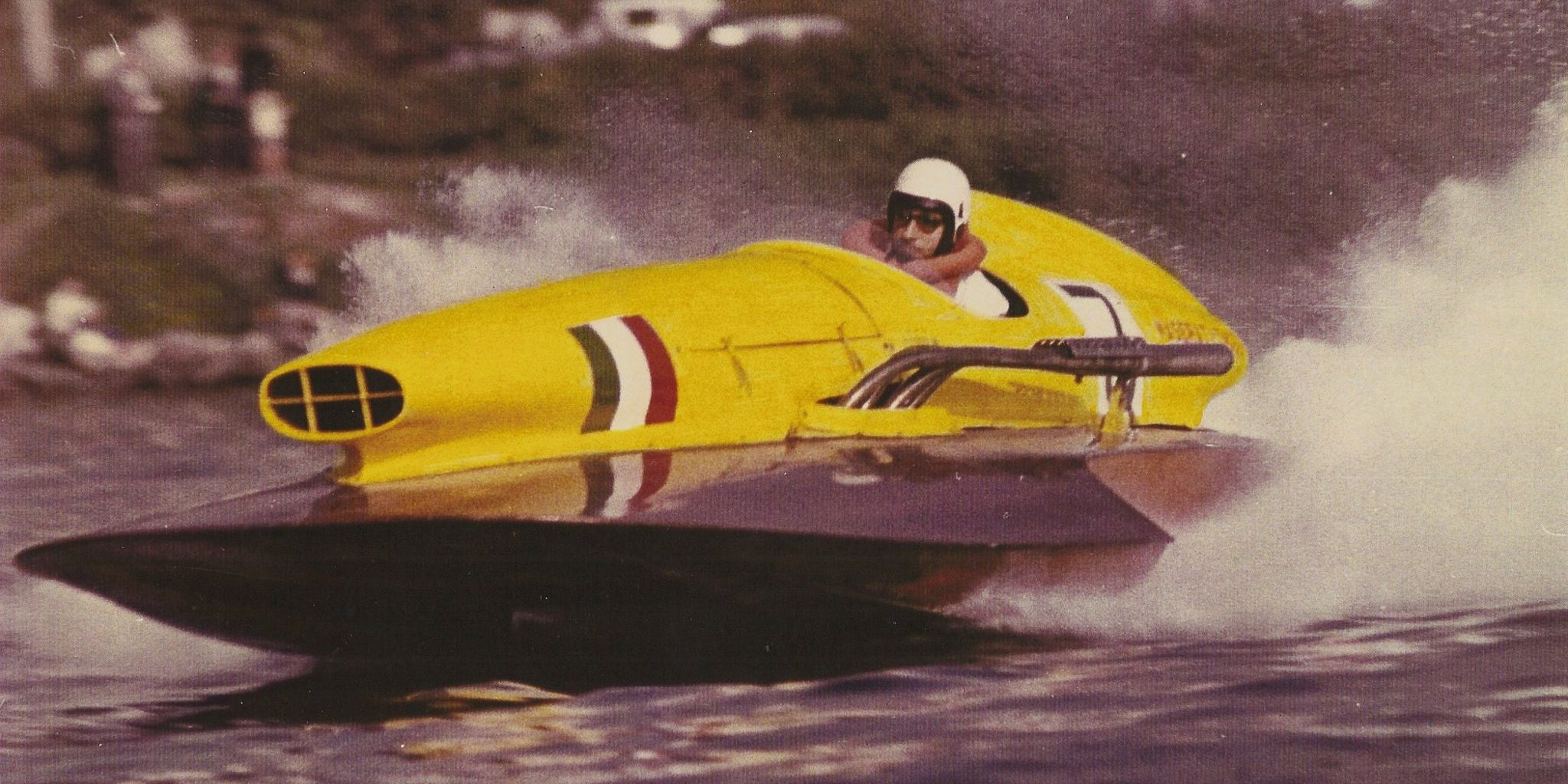The sport of motor-speedboat racing was born in the early century, between 1904 and 1905. The first major Italian success was achieved by Gallinari, on a speedboat that he built and which he powered with a FIAT engine. The search for more and more powerful engines didn’t leave the Maserati brothers indifferent, as they hoped to be able to provide a major contribution to motor-speedboat racing through their aluminium propellers, which were appropriate both due to their lightness and power.
The name Maserati has been linked with this sport ever since 1930, as their engines have always taken Italian motor-speedboat racing to very high levels, winning many primates and world championships.
In 1932, Count Theo Rossi from Montelera brang the speedboat to success, the Montelera XII, powered by 1500cc 4C Maserati engine. In 1933, the Count equipped the same speedboat with a 4 cylinder, 3000cc Maserati 8CM engine, and he won another primate in Riva del Garda. The ambition of the eclectic sportsman drove him to mount on the speedboat a Montelera XV, built by Cantieri Baglietto, two Maserati V5 engines; one 5000cc 16 cylinders, number 5003 with dextrorotation, and number 5002 with levorotation. This enabled the connection of two engines directly through their rear extremity through two gears, one which was assembled directly onto the propeller shaft. This speedboat came within the Racer 12-litre category, which had been dominated for a long time by the Isotta Fraschini engines, its debut wasn’t the best, as in June 1933, in Gardone, Count Rossi was the protagonist of a scary overturn, with the speedboat which hadn’t been fully tested yet. A few days later, once again in Gardone, the speedboat went above a speed of 114 km/h, the maximum speed ever detected during that event.
The engine size, which was too low for the limit of the 12 litre category, and the heaviness of the two engines, induced Count Rossi to rethink his project. During the same year, he had the Cantieri Baglietto build the speedboat Ravanello, to fit in the 6 litre Racer category, equipping it with only one Maserati V5 engine, number 5002. On the Bracciano Lake, Count Rossi managed to beat the world championship of 113.5 km/h, surpassing by 7 km/h the previous record, which belonged to Prince Ruspoli, with the speedboat Celli and Bugatti engine. In 1934, in Sabaudia, Ravanello surpassed any expectation, bringing the speed record to 122.2 km/h.
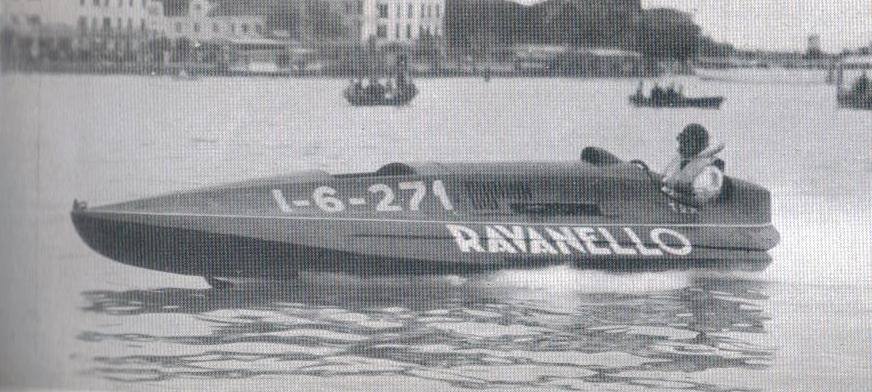
Prompted by the more and more powerful engines, speedboats went through a major evolution, up until the solution of the three-point speedboats. The Cantieri Guido Abate, with the speedboat Laura and the Cantiere Timossi, with the speedboat Maria Luisa IV enabled fitting 350 or 500 kg racers in smaller categories and develop higher speeds than the higher pre-War categories. On 13th November 1954, in Sarnico, Liborio Guidotti, with the Timossi Maria Luisa IV speedboat, powered by the Maserati 150/S-4 cylinder engine, reached the speed of 160 km/h.
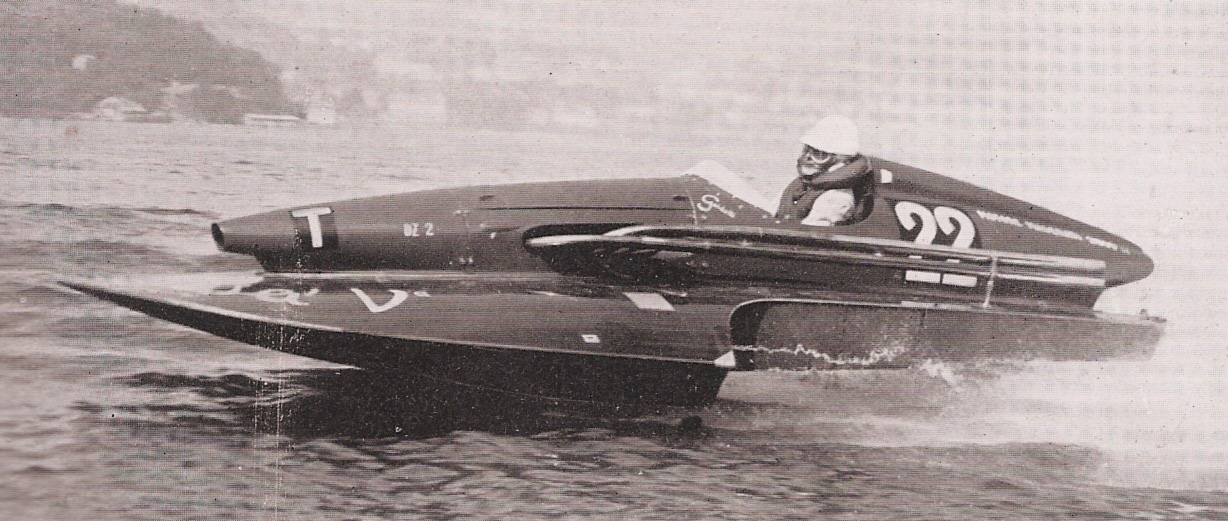
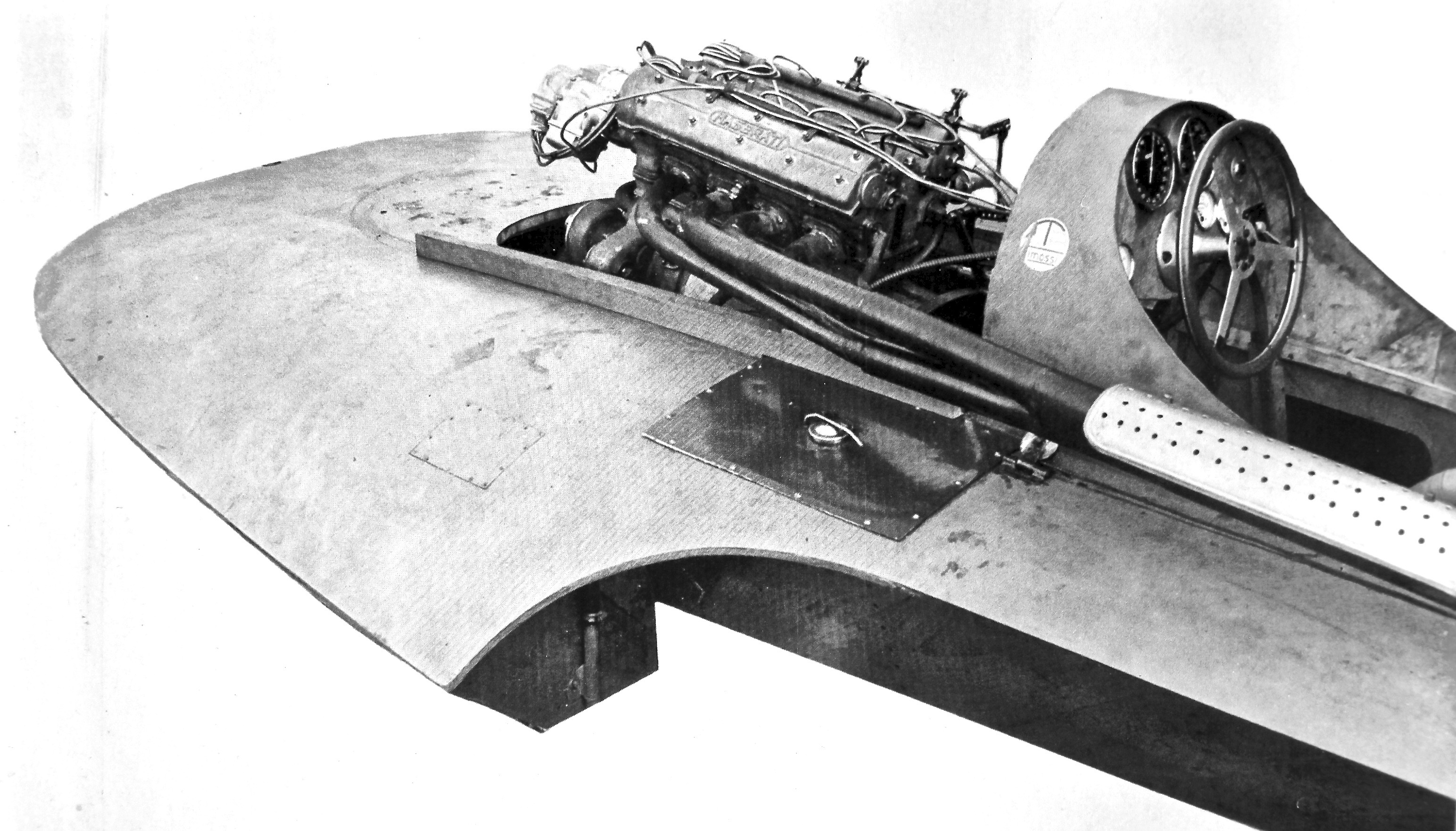
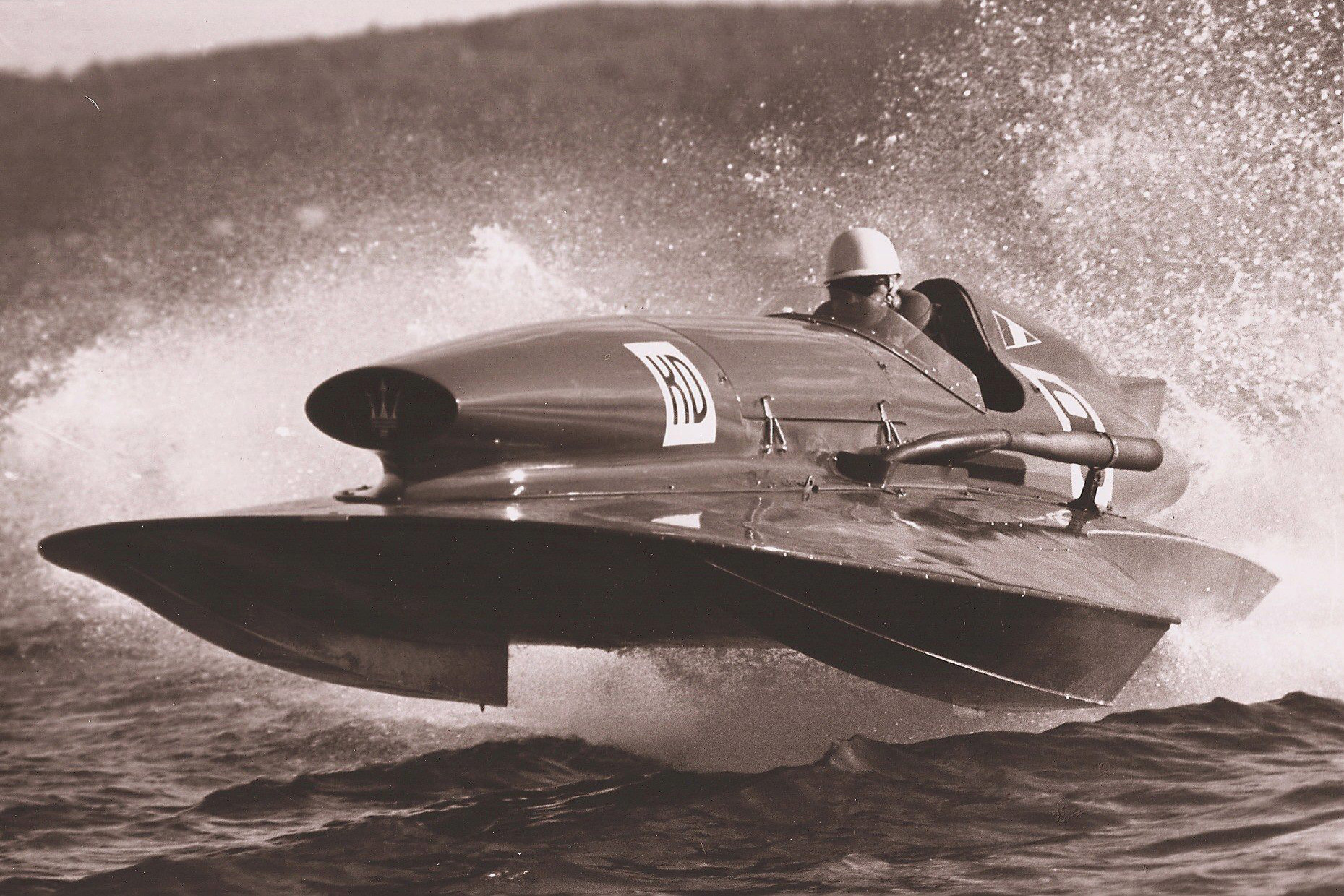

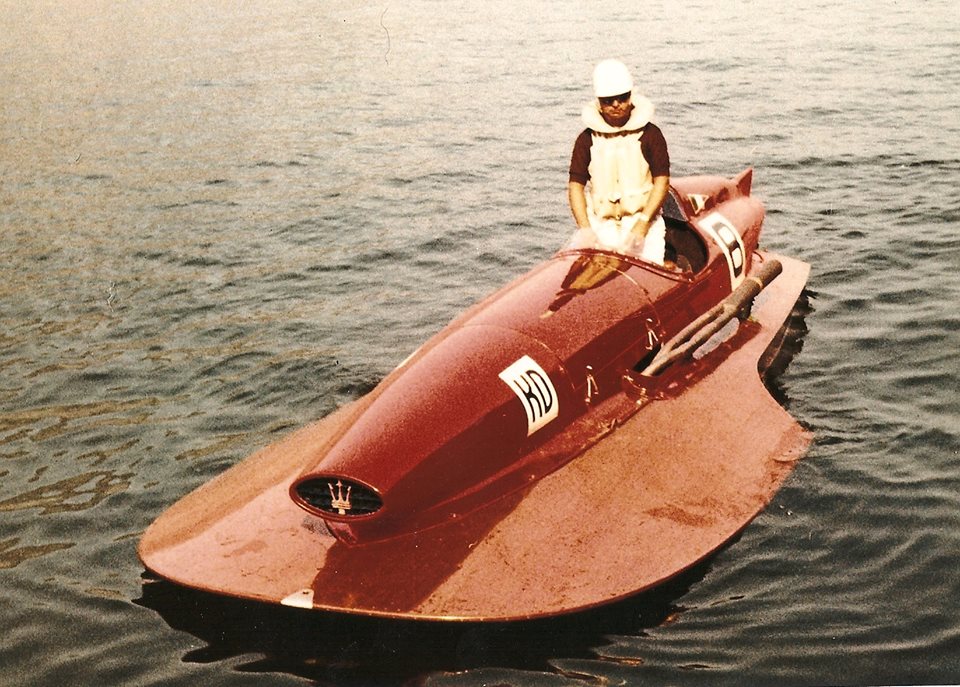
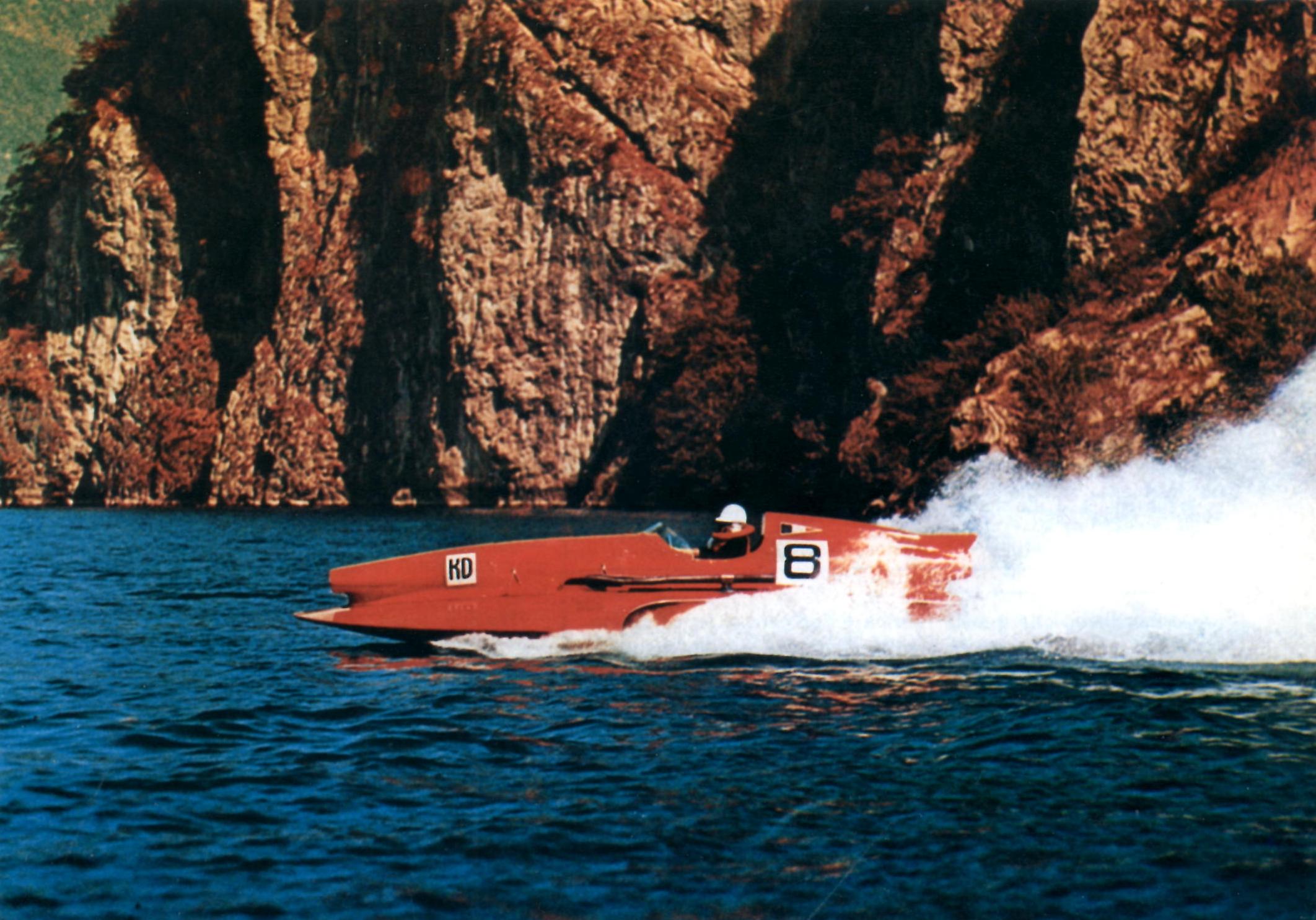
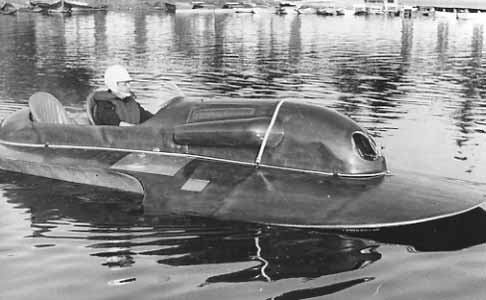
Mr. Guidotti, a real sportsman and always seeking new emotions, involved the whole family in his will passion for motorboat racing. With him, his sons, Flavio and Giorgio, achieved major success worldwide.




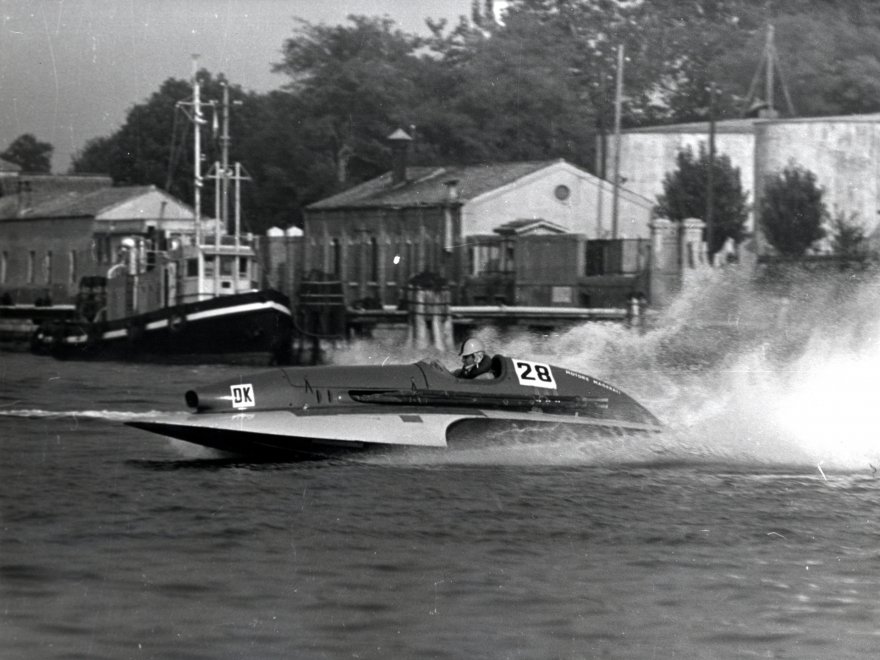
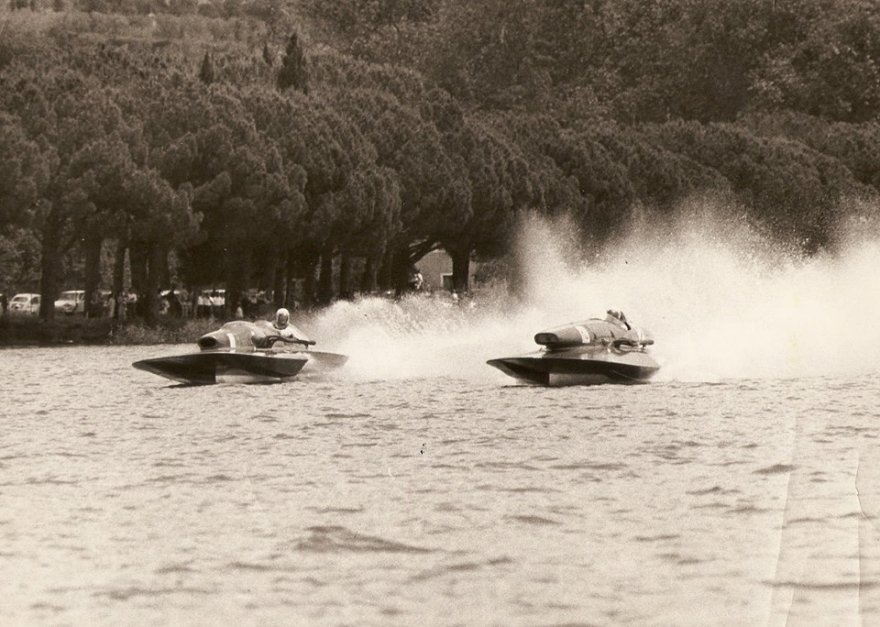
From 1958/59, the Italian motorboat racing, set in a particularly vital environment, ensured continuity, as well as progress, publicity and consistency in such activity. Other sporty gentlemen became part of the Maserati family, such as Livio Spagnoli, the first ever world champion with the 5600cc V8 Maserati engine, in the Racer 800kg category. As well as others, such as Marchisio, Siviero, Dell’Orto. In 1961, at the seaplane base in Milan, Orazio Scarpa achieved the world record in the KE-1200kg category, with the speedboat Abate and 6400cc 8V Maserati engine, reaching a speed of 235,80 km/h.
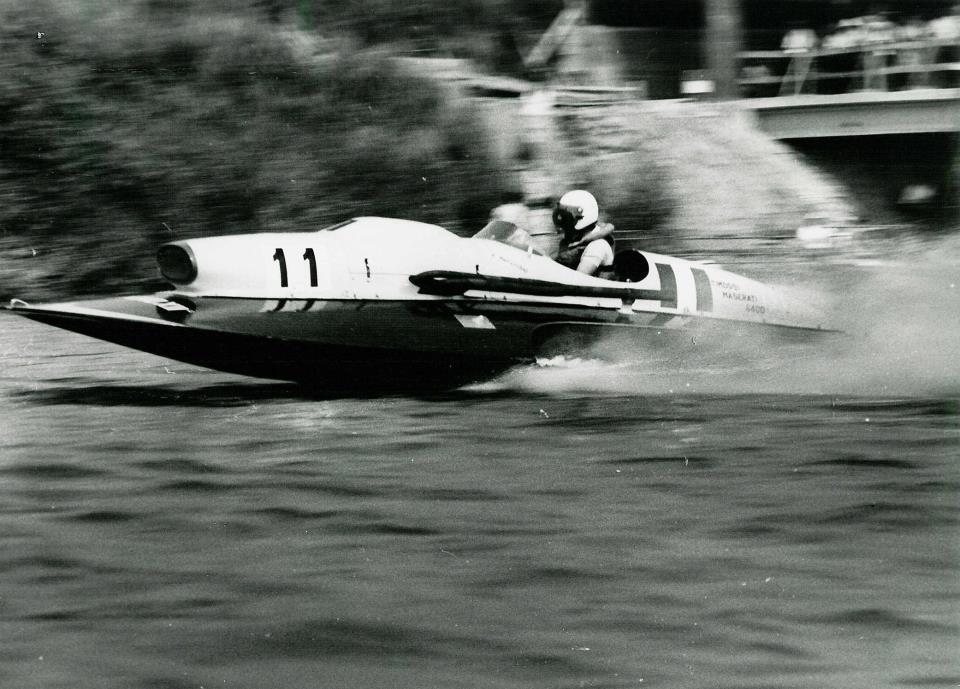
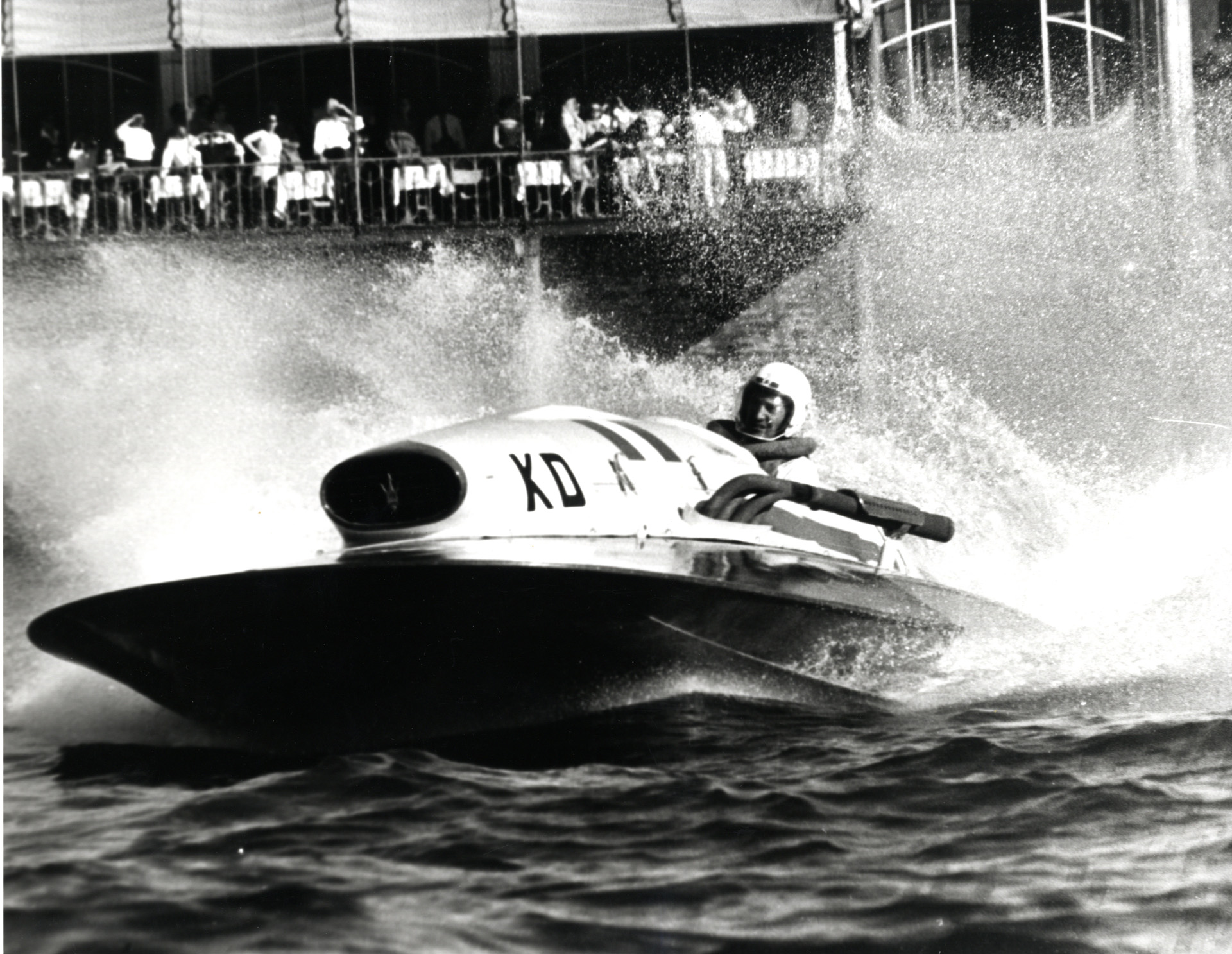

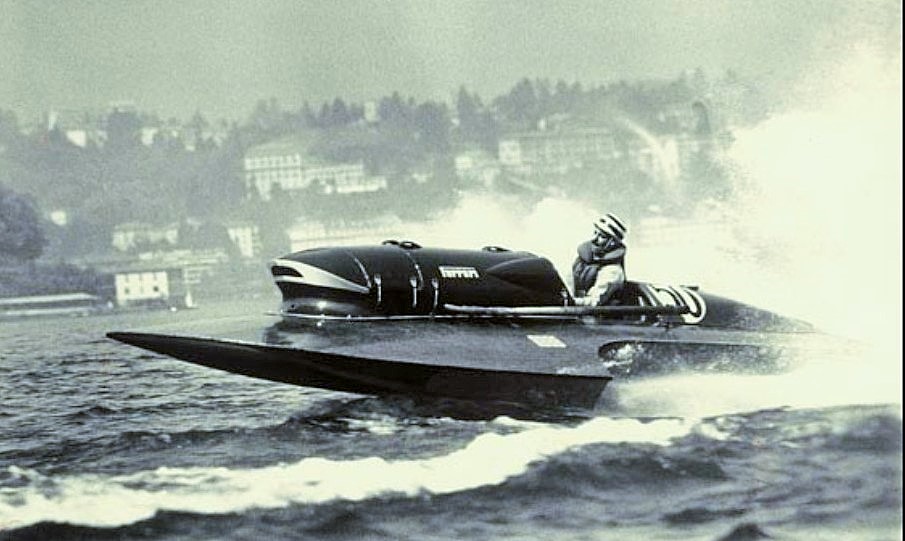
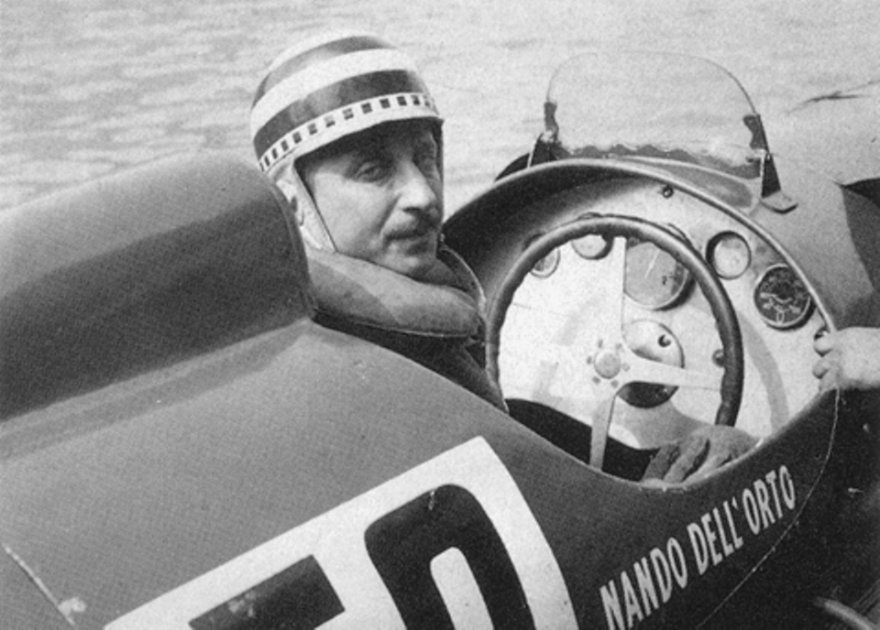
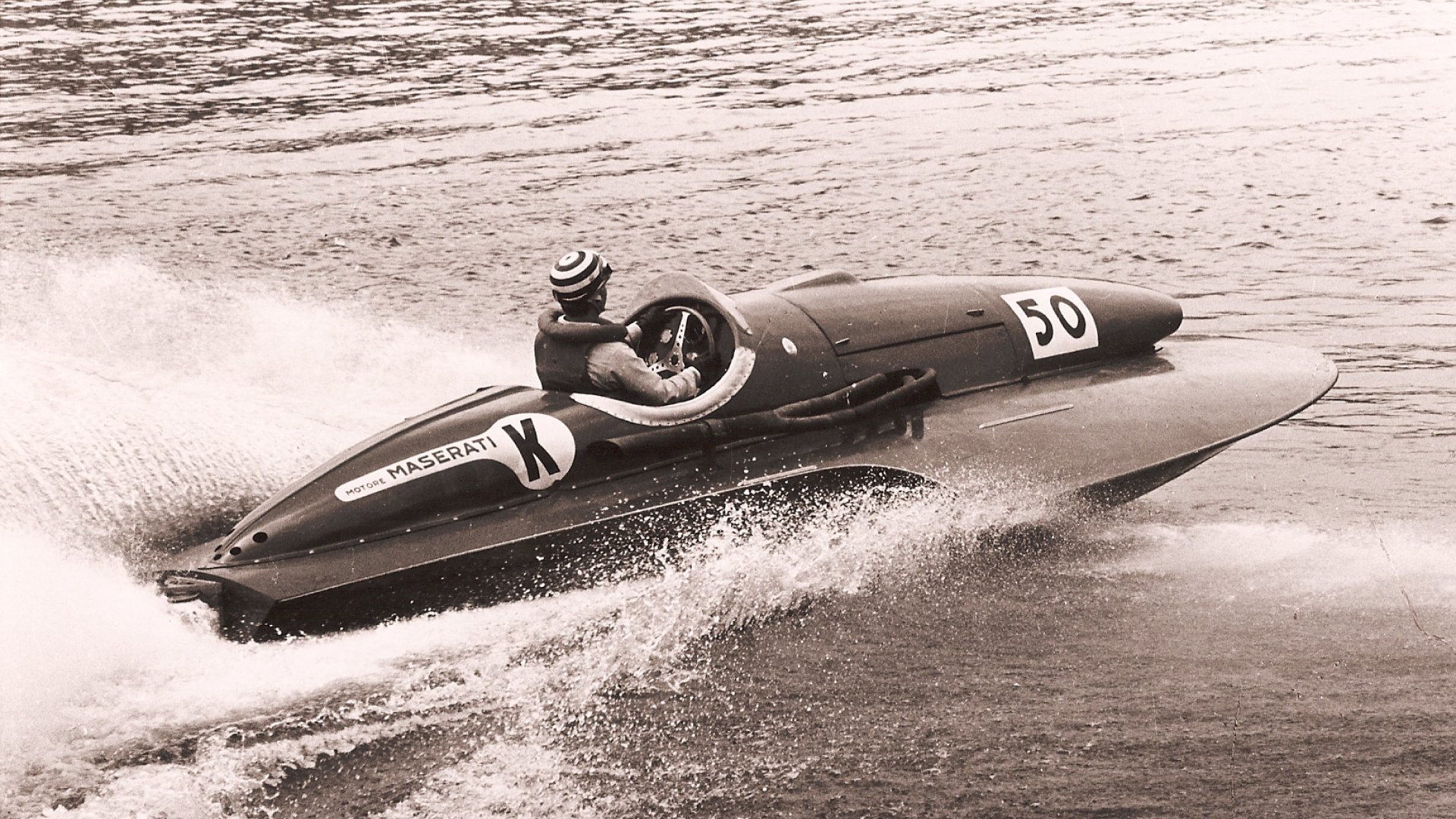
For eleven consecutive years, the 8V-90* Maserati engine (first with 4500 cc – with 420CV and 8000 revs, double ignition with a magnet and a contact breaker, 4 Weber 45/48 IDM carburettors, two camshafts for the cylinder head – then with the 530 CV 5600cc engine with 7500 revs, finally with the 780CV 6400cc engine with 7500 revs) conquered different world championships, as well as many other victories and primates in the different category races for boats with inboard engines.
Finally, I’d like to remember the Maserati motor technicians, who followed this sector, and whose work was decisive in achieving the results: Guerino and Gino Bertocchi, Fausto Bietolini, Ciccio Montanari, Mimmo Selmi, Umberto Stradi.
Author: Ermanno Cozza
Photos by courtesy of ThreePointHydroplanes – Italia

